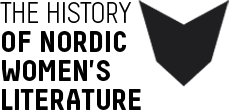Fredrika Bremer has won respect as a personality, as a letter writer, and as a writer of travel accounts. But as soon as it comes to her novels, reservations usually begin to make their appearance. The only exceptions made are usually for Grannarne (1837; Eng. tr. The Neighbours) and Hemmet (1839; Eng. tr. The Home). With these books, she became one of the world’s most read novelists. No Swedish author, not even Selma Lagerlöf, has enjoyed as much success in the English-speaking world. Few Swedish authors have been translated into so many languages.All of Fredrika Bremer’s production may be read in the light of a Realist and a Romantic code. On the one hand, she examines the woman’s position in society, her right to education and personal development. On the other hand, she is preoccupied with the right of the inner life as opposed to the outer life and with the possibilities for passion, the female heart, and the female fire to overturn the existing state of things. It is not balance that constitutes Fredrika Bremer’s originality. Rather, it is the very agitation in the books that captures the reader. She was a passionate being – both as an intellectual and in her search for freedom.
Tag: Autobiographies
Magdalena Sofia, ‘Malla’, Silfverstolpe hosted the most well-known learned salon in Sweden, frequented during the 1820s and 1830s by famous male authors of the time. Through her contact with these famous men Malla Silfverstolpe has gone down in history, whereas her own person and her individual contributions to the salon culture have been marginalised.Her great memoirs, published posthumously in four volumes, are at one and the same time the most important document about the Swedish salon culture and the most interesting literary text by a woman that has issued from this cultural milieu. This latter dimension has been neglected, and the work has primarily been highlighted as a historical source of knowledge about the period’s famous men. Yet, with her close examination of the conditions of emotion, she offers a unique insight into the contradictions of women’s lives and women’s culture in the early nineteenth century.
Herrnhutism arrived in Sweden in the 1720s. The Stockholm Herrnhut community, which still exists today, has preserved autobiographies written in the eighteenth century and the early decades of the nineteenth century. Of these, thirty-six were written by Swedish women; the earliest dates from 1761, the latest from 1810-20. By and large, most of the female autobiographies were written between 1760 and 1790, after which the numbers fall off. The women come from all social strata; we have aristocrats and servant girls, bourgeoisie and beggars. Their autobiographies often exhibit the features that can be described as Augustinian: the women seek God in their inner being, primarily in emotion, in normal psychological processes (dreams, strong feelings). Furthermore, they have mystic features: the women abandon themselves to inner meditations on the cross and to erotically-charged meetings with Christ; they know that the depths of the soul contain the spark that makes these meetings and experiences possible.

